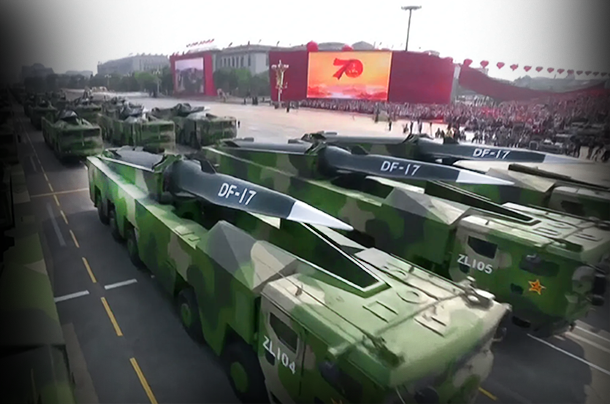from 21st Century Wire:

Gabriel Honrada from Asia Times reports…
US missile defenses face mounting criticism as outdated systems and limited interceptors struggle to counter an evolving barrage of nuclear threats.
This month, the Atlantic Council released a report arguing that US missile defenses are insufficient against nuclear-armed adversaries such as China, Russia and North Korea.
TRUTH LIVES on at https://sgtreport.tv/
The report states that while the 2022 National Defense Strategy and Missile Defense Review advocates staying ahead of North Korea’s missile capabilities while relying on strategic deterrence against China and Russia, this approach is insufficient due to the increasing sophistication and number of missile threats.
While the report says that the Biden Administration’s plan to increase ground-based interceptors (GBIs) by 2028 is seen as a step forward, it raises concerns about strategic stability with China and Russia. The report calls for a layered missile defense system, integrating advanced technologies and offensive measures to prevent missile launches.
It also stresses the importance of protecting US nuclear forces and command and control systems to ensure deterrence.
The report recommends increasing missile defense funding to one percent of the annual defense budget and enhancing transparency with China and Russia to mitigate arms race concerns. It says the ultimate goal is to create a robust defense system that complicates adversaries’ attack plans and reassures US allies.
The report concludes that US national security and its ability to project power globally could be significantly undermined without addressing these threats.
US missile defense may not have been a priority since the Reagan Administration. In 1983, the Reagan Administration unveiled the Strategic Defense Initiative (SDI), a futuristic multi-layered space-based missile defense system. However, SDI was criticized for its exorbitant costs and the fact that it could not be tested without a nuclear attack.
The idea of guarding against a nuclear attack also went against the concept of deterrence, incentivizing a Soviet first strike before the US could complete the system. US interest in the SDI waned when the Reagan Administration ended and when the START I Treaty was signed in 1991.
Further, Robert Peters and Keara Gentry mention in a June 2024 Heritage Foundation report that despite over USD 170 billion spent in the past two decades, US missile defense capability has remained essentially unchanged since 2004.
Peters and Gentry point out that the 44 GBIs the US has may be insufficient to defeat a limited nuclear strike on the US mainland and future threats. They also say increasing the number of GBIs would cost $90 million each — a costly endeavor.
While the next-generation interceptor (NGI) program aims to bolster US missile defense, a June 2024 report from the US Government Accountability Office (GAO) mentions that the program faces risks due to overlapping design and production activities, optimistic scheduling and increased costs from supply chain issues.
Read More @ 21stCenturyWire.com



